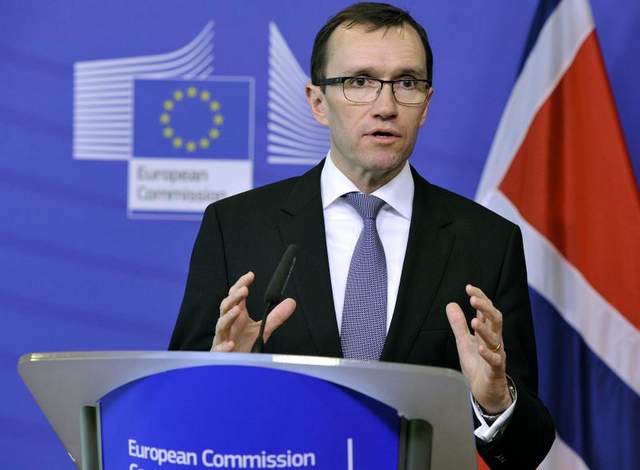
From Gerard O’Dwyer, Defense News: After serving as Norway’s defense minister, Espen Barth Eide was named minister of foreign affairs Sept. 21. A leading figure in the ruling Labor party in the country’s three-party coalition, Eide had earlier served as state secretary in the MoD from 2005 to 2010.
As state secretary, Eide was in charge of the political process that led to Norway’s selection of the F-35 joint strike fighter as Norway’s new combat aircraft in 2008. The minister is ope`nly supportive of NATO, in partnership with Norway, playing a stronger role and raising its understanding and situational awareness in the Arctic High North. Eide is also a robust advocate of improving cooperation and partnership among NATO, the US and Russia.
Q. What strategic defense or security role would Norway like NATO to play in the Arctic and Norway’s High North?
A. To begin with, NATO is not another entity. Norway is NATO and a member of NATO. The Norwegian part of NATO is taken care of by us. We never wanted foreign bases in Norway, and this has been a longstanding policy. What we would like to see from NATO is improved situational awareness and a better understanding of our region.
Firstly, we would like to help the alliance to refocus more on its core mission at home. Secondly, we want to use the Norwegian Armed Forces’ headquarters at Bodø as a pilot project to demonstrate how we can link NATO command structures to national command structures. Thirdly, we want NATO to regain a kind of territorial understanding of security. The post-9/11 paradigm was so strong in suggesting that the world is divided into a battle between good and evil in the early Bush administration that we really do need to rediscover geography and gain better insights in realpolitik.
Q. The Norwegian approach to how NATO can strengthen its role in the High North suggests a need for more and perhaps larger-scale military exercises. What more can be done to expand the range of exercises that take place?
A. Norway has superb areas to hold large-scale exercises. We already have the Cold Response exercises, but we want to use areas in Norway’s High North for air, sea and land combined exercises to train in areas which are much bigger than anywhere else in Europe. Now that NATO is reducing its operational role in Afghanistan, and there is really not another operation in sight, we need to keep our forces connected through international exercises, and we believe Norway offers a good base for that.
Q. What were the primary issues relating to the High North’s security and defense that Norway communicated to NATO during Secretary General Anders Fogh Rasmussen’s visit to Bodø and Tromsø in May?
A. We are very happy with the outcome of the visit by Rasmussen to Bodø and Tromsø. The purpose of that visit was not to ask for a physical NATO presence in the High North. Our view is that NATO is there, as we ourselves are NATO and have a robust presence in the High North as NATO.
We wanted the visit to accomplish an enhanced situational understanding, both awareness and the way we cooperate in the High North. We also wanted to use the opportunity of the visit to demonstrate the capabilities of our main defense forces’ command headquarters in Bodø and how these facilities can be better linked-up to NATO. We achieved what we wanted from the visit. . . .
Q. Are you saying that Russia’s massive spending to rearm its military installations in the High North does not overly worry Norway because it does not pose a real and immediate threat to security in the region?
A. That Russia is strengthening its military is not something we are particularly alarmed about. Yes, the rearming is taking place close to our borders, but not because of our presence but simply because the Kola-Murmansk area is the most accessible harbor that they have. It is logical that they would locate some of their strategic capacity there. We also see some modernization that we actually welcome, like constructing better infrastructure along the North East Passage, most of which is north of Russia. These infrastructure projects include building harbors and heli-pads, which are essential for such vital functions as air and sea search and rescue. (photo: AFP) (via Edward Lucas)
Image: afp%207%2012%2013%20EBE.jpg
